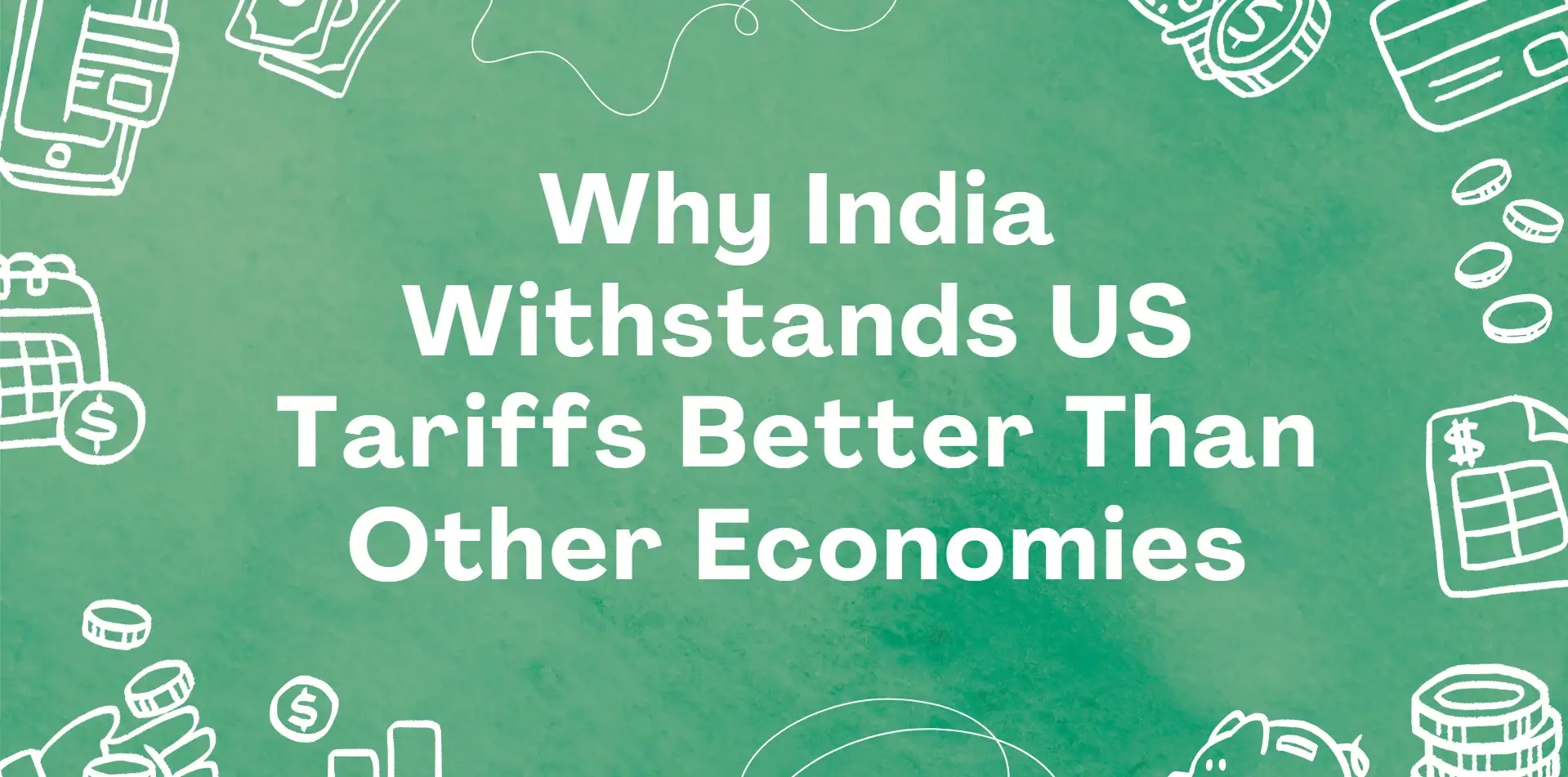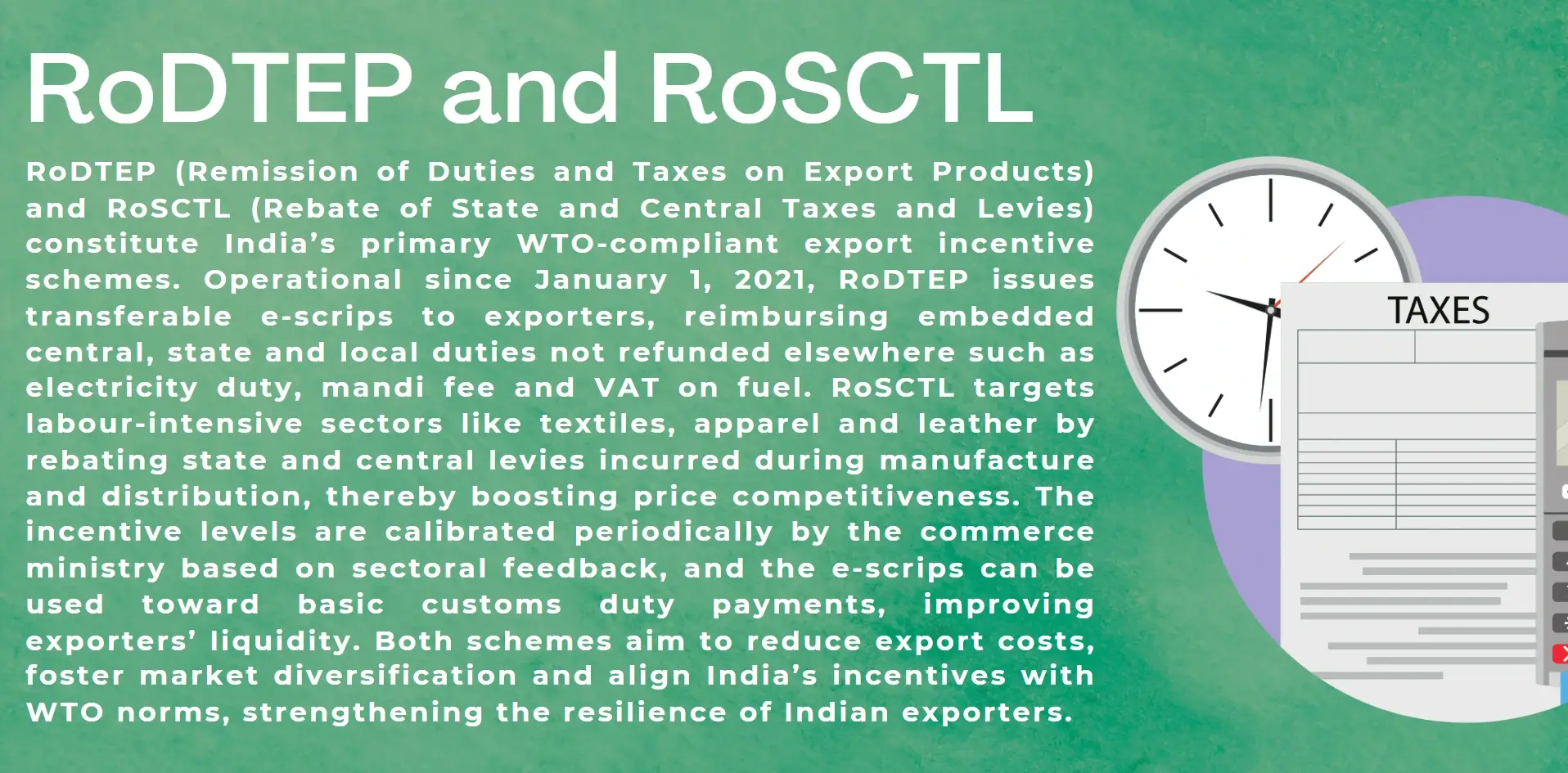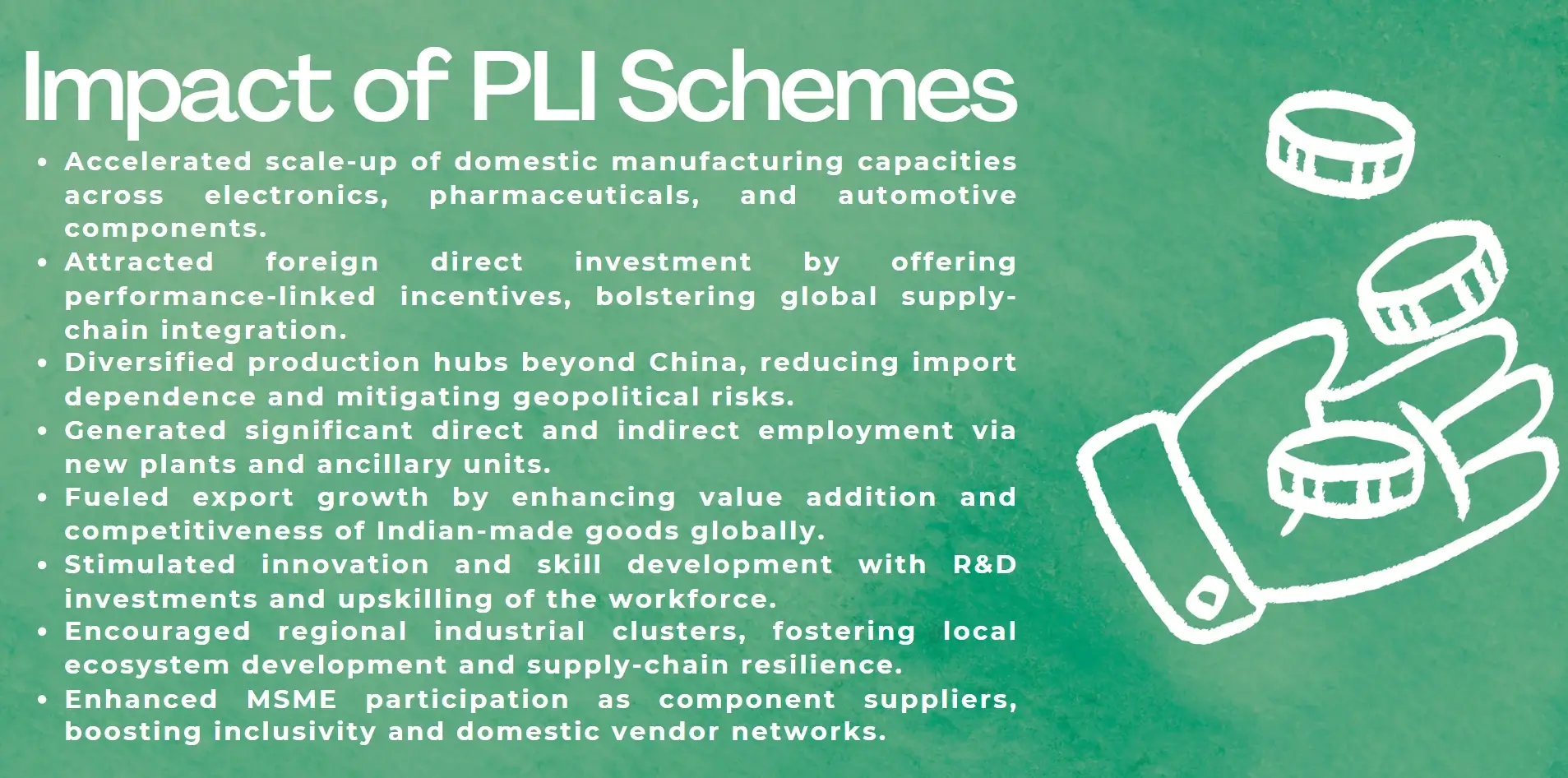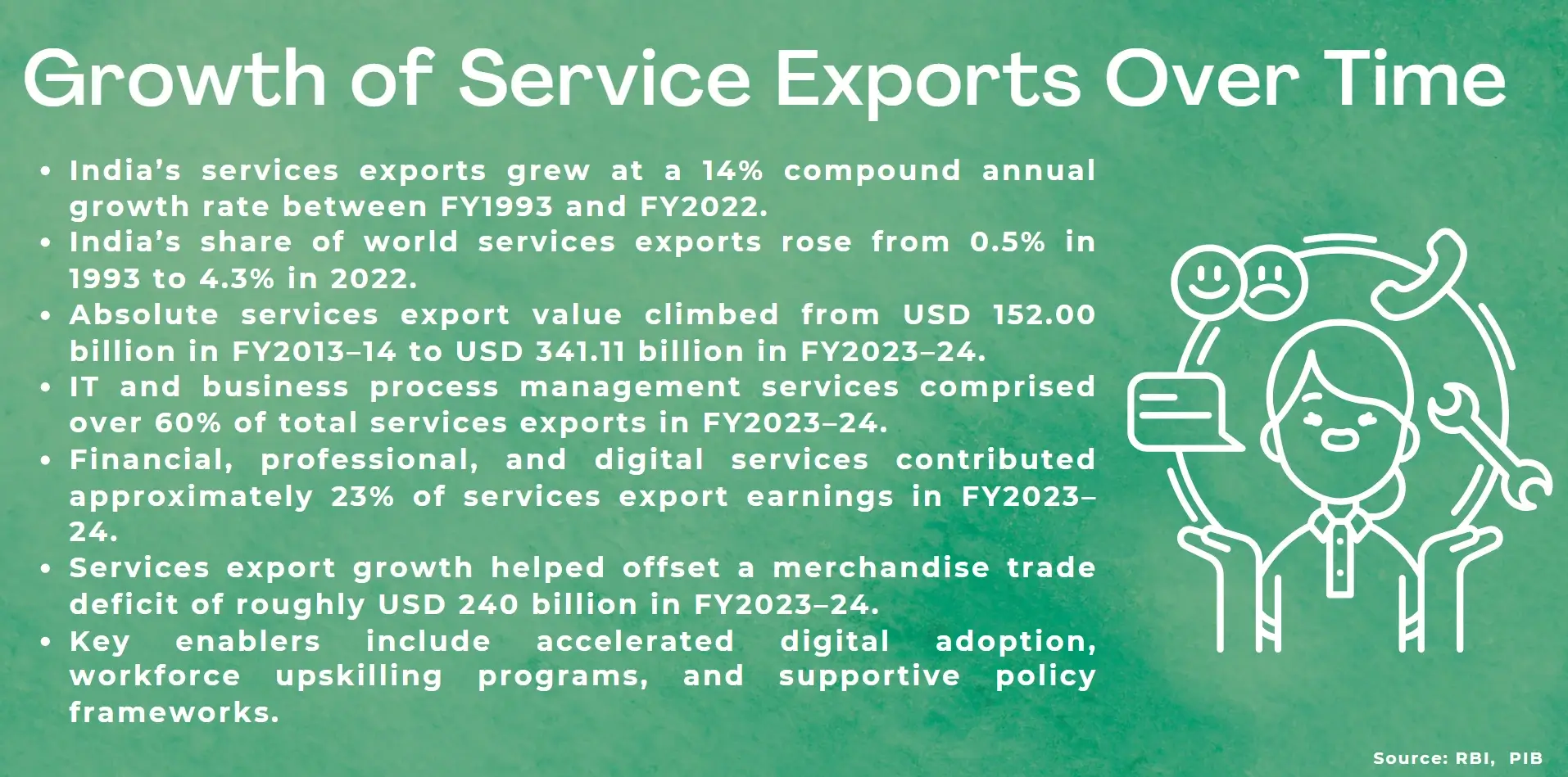Export diversification and the robust domestic demand, policy support, and the booming and tariff-free services sector maintain the resilience of India's economy against higher US tariffs.

Against the backdrop of rising trade tensions in the world, there is the introduction of US tariffs on major imports, leading to economic imbalances in most countries. India has surprised everyone with the relative stability in its economy with respect to these external shocks. Other upcoming economies have been facing challenges of declining export volumes and an investor confidence that is decreasing but India has maintained a strong macroeconomic profile. A notable question that comes forth as a result of this phenomenon is, what is the difference between India and the countries vulnerable to tariffs?A more detailed examination makes it clear that the defense takes layers, and each of them consists in structural multi-diversity, future-oriented policy, and global location. The export basket of India is skewed more in the service sector, pharmaceuticals, and exports of high-value goods, which have been relatively untouched by US tariffs. Its home market, which is supported by the increase in consumer demand and sound investments, serves as an external shock absorber. In the meantime, aggressive government initiatives, such as similar Production-Linked Incentive (PLI) programs and specific support to the MSMEs, have boosted competitiveness. Supply-chain realignments, exchange-rate management also cushion the economy against tariff tremors.This article focuses on the reasons why India has been relatively immune to actions by the US concerning its trade policies, pointing out critical policy shifts, economic developments and dynamics that have remained influential in defining its stability.
Overview of the US Tariffs and Global Effect
Tariff policy in the past decade, the US tariff policy has evolved away multilateralism to meet selective protectionism, and in particular withpresidential regimes that aimed at correcting a trade imbalance. Starting with high tariffs on Chinese steel and electronicgoods, these have quickly spread to payback tariff in EU products, and have shaken up well-established supply networks, and changed international trade patterns.
Various US export-dependent economies, especially the manufacturing-intensive ones, such as China, Mexico, and Germany, had experienced an immediate decline in industrial productivity, investor confidence, and the value of the currencies. The resultant trade wars led to susceptibility in the financial markets, limited access to raw materials at affordable prices and increased costs of compliance across the borders.
To the countries that were integrated in the US-led supply chains or relied on the exports of commodities, there was the twofold shock of price fluctuation and shrinking demand. Multinational companies started to consider the problem of the production relocation, which promoted a different type of strategic shift known as China+1, which put additional strain on classical exporters.
These policies have been called out by the world bodies, including the IMF and WTO, to fracture the trade architecture and weaken the prospect of global economic growth. However, in this tormented background, India has bucked the trend, due to structural cushions and the ability of policy to be swift and nimble, as will be discussed in this article.
Export Profile and Diversification of India
Over the last twodecades, India has seen a deep transformation in its export orientation that has moved away from traditional dependencyonlow-value products and into a more balanced and high-value mix.
- Compared to economies that are highly dependent on industrial exports prone to the US tariffs, India has a sound service industry that has IT, software, consulting, and digital platforms, which do not necessarily fall within the ambit of classic tariff schemes. These services have even come to contribute close to 40 percent of export earnings, placing India in an advantageous position in case any protectionist commercial moves are enacted.
- In addition to the services, the goods export of India is structurally diversified into pharmaceuticals, gems, jewellery, agricultural products and engineering goods. Industries such as biotech and generic drugs have the advantage of international demand and cover all the vicissitudes of tariffs due to their necessity and geographical diversification of export rates.
- More importantly, India has firmed up in terms of their trade through bilateral cooperation as well as strategic regional relations. The strategic alliances with ASEAN, Africa, the UAE, and Australia will curb the reliance on the US markets. Incentives like RoDTEP and RoSCTL in the government encourage the further growth of the sector and make it competitive.
- This broad geographical and product base makes it inherentlyflexible,allowing the Indian Exporters to shift focus. In other words, it is not only diversification, but smart balancing that makes India resistant to shocks caused by the levying of tariffs.

Home Demand Strength
One of the characteristics of the Indian economy is associated with the stable growth of domestic demand that can act as a counterweight to external impacts such as US tariffs.
- India has the advantage of a large and young population as opposed to an export-dependent economy, so it has a consumption-driven growth model. The market is posing a strong internal activity driven by rapid urbanization, increasing disposable income, and aspirational reconciling tendency, especially in FMCG, consumer durables, and real estate sectors.
- The government actions have provided even more support to this demand. Many of the programs, such as MGNREGA, PM-KISAN, and the subsidized cost of rural households they have helped augment the purchasing power in rural areas that are underserved. Rural electrification, direct cash transfers, and food security schemes have not only raised the standards of livelihoods but also induced a local demand for more basic and industrial goods at the lowest level.
- In the meantime, the private investment has resumed in full swing, especially in infrastructure and housing. Consumer analytics and digital penetration are also pushing startups into new growth pockets by increasing the number of offerings in Tier-II and Tier-III cities.
- Notably, this domestic consumption buffer enables India to deal with trade headwindsnimbly. Exports may be a victim of the tariff pressure, but internal demand will hold manufacturing, service,and jobs. This broad-based based inclusive consumption-based foundation is what has cushioned India against the turbulence of international trade as well as strengthened its growth dynamic.
Active Trade and Industrial Policy
It is no coincidence that India has been spared the wrath of US tariffs as a concerted recalibration of its trade and industrial policies takes place. At the core of this change is the implementation of specific policy instruments that increase the degree of competitiveness, expand the export potential, and encourage value addition to initiatives within various sectors.
- Among the outstanding ones, the Production-Linked Incentive (PLI)scheme aims at boosting the manufacturing sector in sunrise sectors like electronics, pharmaceuticals, and auto components.
- The program offers financial incentives based on output and localization, thus making India a substitute worldwidehub within the post-tariff chains of supply. The initiative, coupled with reforms in ease-of-doing-business and lower compliance costs, improves India in the international outreach.
- Export Competitiveness is also enhanced by schemes such as RoDTEP (Remission of Duties and Taxes on Exported Products) or RoSCTL (Rebate of State and Central Taxes and Levies),which takes care of establishing parity with international exports by not letting export prices be escalated by taxes. These aid industries in wayfaring tariff-driven uncertainties and sustain margins.
- Simultaneously, digitalization of customs checks, modernization of logistic markets and streamlining of the E-documentation of trade minimize the value of customs procedures and lower transactional prices of small exporters and MSMEs.
- By harmonizing domestic policy with international trends, India develops a blueprint of resilience less dependent on the markets prone to dynamically changing tariffs, more oriented towarddiversified and forward-thinking trading interactions.

Supply-Chain Changes in the World
A paradigm shift in the global supply chain is emerging as a result ofgeopolitical tensions, technological disruption, and climate urgencies.
- The post-pandemic adjustments have forced governments as well as business corporations to emphasizeresilience rather than on efficiency, leading to de-concentration in single sources of business, especially in key industries such as semiconductors, pharmaceuticals, and clean energy.
- This transition is to the benefit of emerging economies like India, Vietnam, and Mexico, as friend-shoringis a strategy to de-risk the operations. Developing production-linked incentives (PLI) schemes in India, upgraded logistics facilitiesand e-governance have set India up as a prominent destination of electronic, textile and clean energy components.
- Blockchain-enabled supplychain visibility and AI-based traceability solutions, along with climate-smart supply chains and circular designs, are becoming new buzzwords in the global procurement spectrum. At the same time, EU and the U.S. environmental regulations are transforming the mode of sourcing, production, and trade of goods.
- In general, the move heralds not only logistical realignment, but a shift in global economic rationality,operations flexibility, sustainability and regional cooperation. The ability to coordinate manufacturing capabilities and policy incentives will have a say in the future of distributed and resilient supply systems in countries.
Service-Sector Insulation
The service sector in India has excellent cushioning against tariff shocks and supply chain-related shocks worldwide, owing to its knowledge-intensive character and its dependence on physical exports.
- Fields like IT services, financial consultation, education, and healthcare are successful and do not depend on material inputs, as human capital and digital infrastructure are the cornerstones of their success. These cushions them against fluctuation in prices and tensions in trade, which impact manufacturing.
- Additionally, Indian services firms also have high demand in the global market, particularly in the globally transferable services such as software development andback office activity. Scalable talent pools and the command of the English language in addition to accommodating government structures like SEZ incentives and digital skill missions, enhance the versatility of the sector.
- Even against the external economic pressurethe export of services are increasing, which is founded on the stable relations with clients and extended contacts. This not only renders the service sector as stable but a hedge against volatility in the goods-based trade strengthening the economic stability and globalisation of India as a multipolar world.

Weaknesses and Problems
Having increasingly developed resilience in trade and services, India still has various weaknesses that India has.
- The economy still remains prone to world commodity price fluctuations-particularly oil,which could further exacerbate the state of fiscal deficit, leading to inflation. The domestic manufacturing and exportations are still hobbled by a supply-chain crunch in important areas such as semiconductors and medical inputs.
- Inefficient supply chains in transport, especially on the logistics and energy reliability side, place poor competitive parity with other world manufacturing hotspots. As digital ecosystems are developing, the risk of cyber-attacks and data localization creates risks related to the continuity of services in the service industry and hindrance of trust in digital trade.
- In the governance aspect, uneven application of regulation and red tapecompromises the sentiment of investors, particularly innewer industries such as green tech and AI. Besides, the effect of informal labor markets, along with skills mismatch, decreases productivity and inhibits inclusive growth.
- To work around such obstacles, long-term investment in green infrastructure, the restructuring of institutions, and the creation of agile regulatory frameworks capable of combiningeconomic aspirationswithsocial protection and geopolitics are required.
Conclusion
The changing economic design of India also bespeaks sound strategic planning and nimbleness in confronting the shocks of the globalised economy. Although the economy is not subject to trade jolts as a result offlexible exchange rates and a healthy service sector, newfoundsupply-chain readjustments are giving the economy newer opportunities and challenges. Nevertheless, resilient weaknesses, namely, in infrastructure, control, and reliance on resources, demand specific restructuring to guarantee incremental growth in a rising way. To succeed in this multipolar world of trade, India should find its balance points between domestic and international collaborations, invest in green and digital transformations, and build institutional flexibility. Such a holistic process will determine how India can be an economic powerhouse whose contribution makes it a partner of other economies in the changing world order.